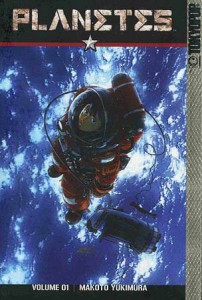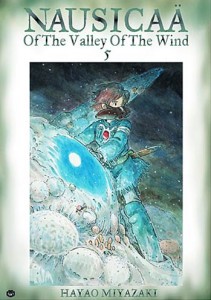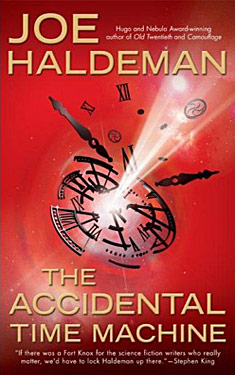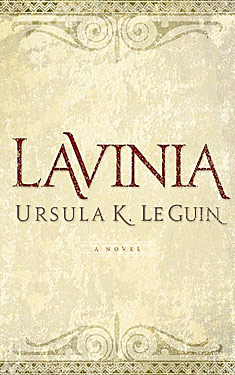SF Manga 101: Nausicaä of the Valley of the Wind
Glenn Hough (gallyangel) is a nonpracticing futurist, an anime and manga otaku, and is almost obsessive about finishing several of the lists tracked on WWEnd. In this series on SF Manga Glenn will provide an overview of the medium and the place of science fiction within it.
To a certain section of the population the name Hayao Miyazaki should be familiar. If you’ve ever paid any attention to the Oscars, especially in the animated feature category, the 2002 win by Spirited Away should leap to mind. Miyazaki was the director.
It is not a overstatement to say that Hayao Miyazaki is one of the gods of animation in Japan. He should be mentioned in the same sentence with early Disney and Chuck Jones. His movie My Neighbor Totoro has been compared to a perfect summers day; were both the movie and the day are equally, delightfully, plotless. It’s said of Spirited Away that it’s a reflection of the Japanese soul, which includes bathhouses, spirits, and the ever recurrent need of youth to find and embrace their courage in the world.
What does this have to do with SF Manga? It’s simple. In Miyazaki’s early days, he was the mangaka who slowly wrote and drew, taking 12! years, the manga that’s in second place on my list: Nausicaä of the Valley of the Wind.
Yes, the name of the title character comes directly from Homer’s Odyssey. Homer’s Nausicaä is a young princess. Miyazaki’s Nausicaä is a young princess. And that is where their similarities end.
GMRC Review: Make Room! Make Room! by Harry Harrison
 Glenn Hough (gallyangel) is, among other things, a nonpracticing futurist, an anime and manga otaku, a gourmet, a writer of science fiction novels which don’t get published to world wide acclaim, and is almost obsessive about finishing several of the lists tracked on WWEnd. This is Glenn’s third featured review for the GMRC.
Glenn Hough (gallyangel) is, among other things, a nonpracticing futurist, an anime and manga otaku, a gourmet, a writer of science fiction novels which don’t get published to world wide acclaim, and is almost obsessive about finishing several of the lists tracked on WWEnd. This is Glenn’s third featured review for the GMRC.
 Let’s just get this out of the way right now. (And if you don’t know, this was the novel which was the basis for the 70s era classic SF movie Soylent Green.)
Let’s just get this out of the way right now. (And if you don’t know, this was the novel which was the basis for the 70s era classic SF movie Soylent Green.)
It’s not people! Soylent is not people in the novel. The novel doesn’t even hint at that. Frankly, it would’ve made the thing more interesting.
Harry Harrison presents us with a novel of squaller. New York has 35 million people in it. Most are poor, underfed, on the welfare; everything is falling apart since there are no supplies left to fix anything. Electricity is spotty. When the main character gets called to his police job early because of pending water or food riots, they have to send someone physically to his apartment to get him. Technology is in retrograde. People are either overworked or unemployed. The black-market deals in the rarest of commodities: beef. Occasionally, someone captures a rat. What a feast that will be for them.
The U.S. is a third world shithole.
Make Room! Make Room! is message fiction. It takes the Malthusian theory and runs it forward to a hard and nasty place, giving us fiction which we then want to Prevent in the real world. This is very clear when one of the main characters lays the blame for everything on population. And how social, political, and religious institutions around the world refuse to address the issue. This book predates Ehrlich’s seminal work, The Population Bomb by two years. The Club of Rome, a Futures thinktank, started in ’68 as well and their first big splash was in population projections. This issue was on the minds of many social thinkers and futurists.
SF Manga 101: Ghost in the Shell
Glenn Hough (gallyangel) is a nonpracticing futurist, an anime and manga otaku, and is almost obsessive about finishing several of the lists tracked on WWEnd. In this series on SF Manga Glenn will provide an overview of the medium and the place of science fiction in it.
Hi. Hi. Glad to see you again. Welcome. It’s practically time to say pull up a chair by the fire. It’s the dampness. That’s what gets me.
Since I know we can all go wiki-wiki and have all the summery one could want in seconds, I’d like to concentrate on the questions: why these mangas? Out of all of the possible SF mangas, why should we, why did I, pay attention to these?
Well, when it comes to the top SF mangas out there, I think the top three spots are basically agreed upon. Their order, however, is not. It’s a matter of personal appeal. Do you go for the ecological collapse and resource wars as humanity lives on in the twilight world of Nausicaa? Or do you go for the forced human evolution and the releasing of psychic powers which can not be controlled in Akira? Or do you go with the cyberpunk ethic, wrapped in a police procedural, which ends in something that looks very much like what the Kurzweil crowd would call the singularity in Ghost in the Shell?
Personally, I think Ghost in the Shell takes the top spot. Yes, definitely, all three have transformation at their cores but I think Ghost is more relevant as a motif for what the 21st century will be about.
SF Manga 101: An Introduction
Glenn Hough (gallyangel) is a nonpracticing futurist, an anime and manga otaku, and is almost obsessive about finishing several of the lists tracked on WWEnd. This is the first of Glenn’s new series on SF Manga where he’ll provide an overview of the medium and the place of science fiction in it.
 Hi. How are you? Welcome. Glad to see you. Welcome. Please, sit anywhere. Splendid. Splendid.
Hi. How are you? Welcome. Glad to see you. Welcome. Please, sit anywhere. Splendid. Splendid.
A bit ago one of our fearless leaders at WWEnd asked me if I’d like to do a blog concerning SF Manga. I guess he rather liked the short summaries I’d been doing over in the forum section, so why not expand things a bit for a blog? Sure, why not.
My hope is that as we all get more familiar with SF Manga that some of you will will soon have a copy of Nausicaa next to your copy of Dune. Or on your shelf will be The Demolished Man, next to Dying Inside, next to Akira. Or even, on the shelf next to that 1st Pantasia Press hardcover of Neuromancer (you lucky sod) will be a first run flipped and censored edition of Ghost in the Shell, followed by a second run unfliped uncensored edition of Ghost in the Shell. And hopefully each and every title I’ll be blogging about will gain a few more fans from my humble efforts.
But first I think we need an intro to help lay out the landscape we’re going to be traversing together. This is the common starting point, just in case someone is coming to all of this totally cold as I’m sure some of you are.
Manga is the Japanese word for comic book or comic strip. It’s used in America to denote comics specifically from Japan. It also denotes an artistic style. There is a very different visual style between Japanese and American comics.
GMRC Review: The Accidental Time Machine by Joe Haldeman
 Glenn Hough (gallyangel) is, among other things, a nonpracticing futurist, an anime and manga otaku, a gourmet, a writer of science fiction novels which don’t get published to world wide acclaim, and is almost obsessive about finishing several of the lists tracked on WWEnd. This is Glenn’s second featured review for the GMRC.
Glenn Hough (gallyangel) is, among other things, a nonpracticing futurist, an anime and manga otaku, a gourmet, a writer of science fiction novels which don’t get published to world wide acclaim, and is almost obsessive about finishing several of the lists tracked on WWEnd. This is Glenn’s second featured review for the GMRC.
Note: There be spoilers here!
I once heard that all fantasy writers have a bad Lord of the Rings novel in them. It’s something they have to grapple with as writers; they have to deal with this mountain in the landscape of modern Fantasy, which is Tolkien. Any trip to the local Barnes and Noble Fantasy section should prove that many a career started with that bad knockoff Tolkein-esk novel.
I feel that SF writers have to do something quiet similar with H. G. Wells. With, especially, the classic novel, The Time Machine. That out of his works, it’s The Time Machine which is the most universal. It’s the pinnacle of the Scientific Romance as Wells called it. It offers up the perfect vehicle for anything and everything the mind of humanity can conceive.
And so we get The Accidental Time Machine by Grand Master Joe Haldeman.
This novel purrs along like a fine high-end sports car running at the safe and sane speeds of the Montana freeways. We’re not bogged down in too much techno babble or physics-babble. Just enough for flavoring. Nor are we bogged down in too much former girlfriend/mother/professors/ drug supplier/priests/M.I.s. Just enough to flavor the main character’s world, but not enough to slow us down. Haldeman knows what the point is here, time travel, so the other pieces of Matt’s life are thus merely background pieces.
WARNING: Spoilers after the break…
GMRC Review: Lavinia by Ursula K. Le Guin
 Glenn Hough (gallyangel) is, among other things, a nonpracticing futurist, an anime and manga otaku, a gourmet, a writer of science fiction novels which don’t get published to world wide acclaim, and is almost obsessive about finishing several of the lists tracked on WWEnd. This is Glenn’s first featured review for the GMRC.
Glenn Hough (gallyangel) is, among other things, a nonpracticing futurist, an anime and manga otaku, a gourmet, a writer of science fiction novels which don’t get published to world wide acclaim, and is almost obsessive about finishing several of the lists tracked on WWEnd. This is Glenn’s first featured review for the GMRC.
This is a tale of a footnote. Much like Tom Stoppard’s Rosencrantz and Guildenstern are Dead, which looks up at the wide world of Hamlet from the POV of minor characters, Lavinia immerses us in the world of Vergil’s Aeneid from the POV of a woman even further removed from the central action. In the Aeneid, Lavinia is named, she plays a role, a war is fought over her marriage rites since she was being used as a political tool, but yet, she never speaks a word in the poem.
Vergil renders her mute.
Le Guin has now given her a voice.
In terms of presentation, Le Guin’s Lavinia occupies middle ground. It is not the epic ground of heroes and jealous gods that is the backbone of Vergil’s Aeneid. The gods in Lavinia have lost their mythic stature. They are now gods of woods, auguries, the hearth, the storehouse. Gods that are a backbone of life but not humanized master movers. Nor is this book a realist exploration of barbaric bronze age peoples, based in what little archaeology, anthropology and the stories, myths, and lies which is all the historians have of the age. Middle ground. Barbarous yes, but gentled. Epic heroes, not quite, but these are the root cultures which founded Rome. And the seeds of that coming glory are present.
 As the novel opens and we are drawn into this culture, we quickly see the parallels between two well known Greek ladies: Helen and Cassandra. Like Helen, a war is found over her. Helen gave of herself, Lavinia withheld herself. Like Cassandra, Lavinia had foresight. But instead of speaking and not being believed, Lavinia keeps the knowledge to herself. Lavinia has to act this way since the poet gave her no lines in his poem. For in vision quests performed at a sacred sulfur spring, Lavinia meets the dying Vergil. He is a shade, a shadow, filled with grief over his poem which is unfinished and incomplete. He morns his lack of attention concerning Lavinia. It is from Vergil that Lavinia learns her future, the long litany of deaths which are committed in her name, and the knowledge of a son which is a sire to kings, which lead to the greatness of Rome.
As the novel opens and we are drawn into this culture, we quickly see the parallels between two well known Greek ladies: Helen and Cassandra. Like Helen, a war is found over her. Helen gave of herself, Lavinia withheld herself. Like Cassandra, Lavinia had foresight. But instead of speaking and not being believed, Lavinia keeps the knowledge to herself. Lavinia has to act this way since the poet gave her no lines in his poem. For in vision quests performed at a sacred sulfur spring, Lavinia meets the dying Vergil. He is a shade, a shadow, filled with grief over his poem which is unfinished and incomplete. He morns his lack of attention concerning Lavinia. It is from Vergil that Lavinia learns her future, the long litany of deaths which are committed in her name, and the knowledge of a son which is a sire to kings, which lead to the greatness of Rome.
To me, Lavinia’s relationship to the poet Vergil and her knowledge that she is a character in his poem is the most interesting aspect of the book. Lavinia is bound by the limitations Vergil gives her, but fills that space with life, her life; the life of a daughter of a king, wife to the exiled Trojan Aeneas, who has taken up kingship in what will become Italy, mother and grandmother to kings. She is a queen. Since Vergil gave her no lines, little life and no death, in the end Lavinia too does not die. Her body passes but Lavinia lingers in the quiet places of her country. Her immortality is forever linked to the written word of the poet. While Vergil’s words live, Lavinia lives. While Le Guin’s words live, Lavinia lives.
Highly recommended.



















 Full Details
Full Details





